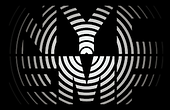
Music
A Collapsing Field (2015)
electronics
Padang (2014)
electronics
Sloth (2012)
violin, electronics, and video
Betrachtung (2011)
piano
Starless Night (2011)
violin, piano, and vibraphone
Untitled 1969 (2009)
piano, vibraphone, and tubular bells
Music
A Collapsing Field (2015)
electronics
Padang (2014)
electronics
Sloth (2012)
violin, electronics, and video
Betrachtung (2011)
piano
Starless Night (2011)
violin, piano, and vibraphone
Untitled 1969 (2009)
piano, vibraphone, and tubular bells
Music
A Collapsing Field (2015)
electronics
Padang (2014)
electronics
Sloth (2012)
violin, electronics, and video
Betrachtung (2011)
piano
Starless Night (2011)
violin, piano, and vibraphone
Untitled 1969 (2009)
piano, vibraphone, and tubular bells
Music
A Collapsing Field (2015)
electronics
Padang (2014)
electronics
Sloth (2012)
violin, electronics, and video
Betrachtung (2011)
piano
Starless Night (2011)
violin, piano, and vibraphone
Untitled 1969 (2009)
piano, vibraphone, and tubular bells

fixed-media electronics, stereo
At points in our lives we find ourselves confronting moments of great loss. These situations draw out old wounds that have remained harbored. But once these moments have inflicted their pain, we are able to look back, understand them, and appreciate the glimmers of life that surround us. Although the pain still lingers, it somehow loses its grip on us and affords us the chance to enter into quieter spaces.
Mike Underwood, accordion
Kyle Grimm, double bass
Adam Lenz, piano and toy piano
10 minutes
First presented on May 10, 2015 in the Black Box Video Studio at the Hartford Art School in Hartford, Connecticut. It was also presented during the New York City Electroacoustic Music Festival at the Abrons Arts Center.
A Collapsing Field (2015)

piano
Betrachtung (Contemplations) is a portrait of Franz Kafka. Each movement makes use of a short fragment found within Kafka’s short story collection of the same name. These seemingly unrelated fragments come together to tell an overarching, yet hidden story that combines the four movements into a seamless statement.
I. “Finally, it begins to rain even in the opacified sky."
from 'Food for Thought for Mr. Reiter'
II. "I cried without sound..."
from 'The Trip to the Mountains'
III. "You see the persuasiveness of the air after a thunderstorm!"
from 'The Way Home'
IV. "For it is night, and we cannot ensure that the full moon reuses in the street in
front of us..." from 'The Runners'
Written for Cassandra Kaczor and first performed in the Dalton Center Recital Hall at Western Michigan University in Kalamazoo, Michigan on April 5, 2012 as part of the New Sounds Festival.
Betrachtung (2011)

Movement I
Movement II
Movement III
Movement IV

violin, fixed-media electronics, stereo audio, and single-channel video
Sloth was written for Mexican violinist Abderrahman Anzaldua as part of La Rueda de los Pecados (Wheel of Sins) project: a commissioning project joining seven composers from the United States and Mexico around the theme of sin.
We often view sloth as a purely pejorative term, but I question if sloth can really be summed up as pure laziness. Below the surface, sloth is a failure to recognize, within ourselves, a feeling of self-worth and ability to succeed. In effect, what reflects itself as laziness is a clouded, outward expression of our own feelings of emptiness and fear: our avoidance of failure. Ironically, although we view sloth as a lack of desire to accomplish, a burning desire to discover our own worth is often hidden just below the surface.
8 minutes and 30 seconds
premiered on November 19, 2012 in the Dalton Center Recital Hall at Western Michigan University in Kalamazoo, Michigan.
Sloth (2012)








violin, vibraphone, and piano
Starless Night was written following the unexpected death of my uncle in November of 2009. Roger Hill was a piano professor at the University of Southern Mississippi for the entirety of his career. He had a profound impact on my decision to go into music and his sudden death was very difficult for me to come to terms with. The work is the result of my search for closure and an expression of my grief for the loss of this artist, respected educator, and irreplaceable friend.
First presented during the New Sounds Festival 2010 in the Dalton Center Recital Hall at Western Michigan University in Kalamazoo, Michigan.
Starless Night (2010)
piano, vibraphone, and tubular bells
In 1969, Rothko completed an untitled series of color fields dominated by hauntingly dark rectangles. These rectangles are dissected by a shocking streak of electric blue. Merely a few months after the completion of these works, following years of struggling with alcoholism and depression, Rothko committed suicide in his New York studio on February 25, 1970.
Untitled 1969, for vibraphone, tubular bells, and piano, is a meditation on Rothko's final days. The work is built in repetitive cells that allow the performers to slowly move in and out of phase with one another. As the work progresses, it builds with a gentle surge in volume and activity before slowly receding back to an open piano drone. Left in a quiet hum, the work ends with final moment to reflect in a dark, empty field of sound.
Premiered on April 4, 2009 in the Dalton Center Recital Hall at Western Michigan University in Kalamazoo, Michigan as a part of the New Sounds Festival 2009.
Untitled 1969 (2009)


fixed-media electronics, stereo
Padang is a series of electronic works for dance. The works in the series are created entirely from archival recordings of Indonesian Gamelan music which have been cut up, processed, and reassembled to form tiny sonic landscapes. The performers interact with these landscapes, incorporating a wide mix of classical Indonesian dance tradition and contemporary performance practice.
The Padang Series was created for Prince M. Gentile Andilolo and Abdi Karya and first presented during the summer of 2014 at The Watermill Center in Water Mill, NY.
Padang (2014)




